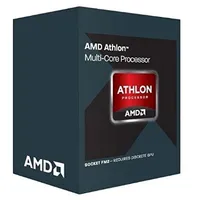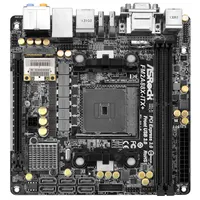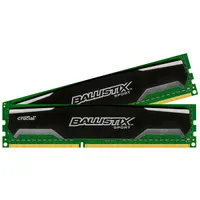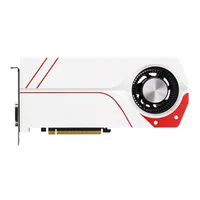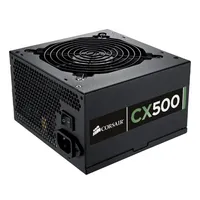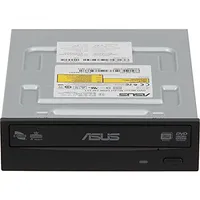System Builder Marathon Q3 2015: AMD Mini PC
This quarter we're building three equally priced PCs, with no theme restrictions! First up is an AMD-based Mini PC for LAN parties dubbed the "Munchkin."
Component Selection
Like many readers, I have questioned past SBMs about hardware selection. Having gone through it now, I have a lot more sympathy for Paul, Don, Thomas, and the other SBM builders. Having a completely firm budget is quite restricting. The machines I've built in the past for myself, family and friends had general budget ranges. An $800 budget usually meant that going to $820 was allowed if the extra $20 meant a greater than 2.5 percent boost in performance. I'm not allowed to do that here. If you can't find a perfect mix of parts and prices, you end up leaving money on the table. Sometimes you get lucky and it doesn't matter a whole lot. In the sub-$1000 range, every dollar counts.
The Munchkin went through two major part iterations. The case, hard drive, and power supply all changed dramatically between the two. My first submitted part list didn't include an optical drive and my chosen GPU had a $20 instant rebate. This allowed me to fit a 240 GB SSD and SeaSonic modular power supply. Management told me I had to include an optical drive. My case didn't have a 5.25" bay, meaning I'd have to get a more expensive external drive or a different case. While looking at my options, the GPU discount ended. That meant I was effectively $40 over budget. Cutting $40 meant dropping the SSD for a mechanical drive and swapping for a less prestigious PSU.
Get Tom's Hardware's best news and in-depth reviews, straight to your inbox.
-
ykki All the talk about the ''path less travelled" and you still couldn't ditch the optical drive (in favor of a better psu).Reply
Aside from that its nice to see an AMD platform in ITX. -
chimera201 This is what I wanted. Comparing different systems at the same price. And 800$ is a good pick for the price. But what I actually want to see is a comparison ofReply
Intel CPU & Nvidia GPU system
Intel CPU & AMD GPU system
AMD CPU & Nvidia GPU system
AMD CPU & AMD GPU system
at the same price at the same time
-
Flying-Q ReplyAll the talk about the ''path less travelled" and you still couldn't ditch the optical drive (in favor of a better psu).
The ODD wasn't Eric's choice, it was an editorial requirement.
Aside from that its nice to see an AMD platform in ITX.
From the article
My first submitted part list didn't include an optical drive and my chosen GPU had a $20 instant rebate. This allowed me to fit a 240 GB SSD and SeaSonic modular power supply. Management told me I had to include an optical drive. My case didn't have a 5.25" bay, meaning I'd have to get a more expensive external drive or a different case.
Speaking of which, it is about time 'management' recognise that ODDs are no longer mandatory. I built a machine 5 years ago with an ODD and have used it only 3 times in those 5 years, and those occasions only because I couldn't be bothered to go downstairs to get my keys with their attached USB stick. On one of those occasions I had to take an external ODD with me as my friend didn't have any ODD of his own!
Aside from all that, Eric, this is a really great SBM experiment and your writing style is a pleasure to read. Thank you. -
alidan is there any way to move to videos/audio that you make 100% yourself, so that we can run our current systems through the same tests? i'm assuming there are a number of people here who would live to bench their system against these to see what an upgrade would cost them.Reply
also, on the optical drive front, i see no reason not to include one.
if you want to talk music, depending on the band, its cheaper to buy used cd's than it is to buy the songs individually, and its far cheaper to buy a used dvd/bluray than to even rent a movie or tv series, some exceptions can be made if you have netflix dvd/bluray delivery, but even than, a 4 disc or 6 disc season would cost you something like 5-8$ to rent and likely the same to buy and have it shipped for free.
personally, i have a bluray burner that i use quite a bit, and i have a dvd drive that till it broke was almost constantly used... its hooked up to an IDE cable, and the last time i messed with one of those the computer wouldn't go passed the bios anymore... so i dont take it out just because i dont want my computer to screw up in a way i dont know how to fix...
lets also say you want to legitimately buy games, you can get in box on the pc games for cheaper than digital most of the time, and when a game goes on sale digitally, you can get them used on the pc for cheaper, though you probably won't line up with the eula if you go that route.
i would at the very least love to see a drive bay case in all builds like this, but the drive itself does not need to be there, a decent compromise or in the case of you absolutely do not want to have an internal drive space, than make an annotated price that shows what it would cost to hook one up... i believe an external sata ide interface is able to run dvd/bluray drives along with hdds (i had to get one when 2 of my external drive cases failed on me, cheaper getting one 20$ thing opposed to 2 cases, one for each interface. -
RedJaron Reply
As I said, regularly I disagree with the "no ODD" crowd. You're right in that they're not always a hard requirement. However I've had enough requirements for them in the last three years that I'll still include one in my personal builds. But, also as I said in the article, I always have a flexible budget where adding an extra $20 isn't out of the question.16691054 said:Speaking of which, it is about time 'management' recognise that ODDs are no longer mandatory. I built a machine 5 years ago with an ODD and have used it only 3 times in those 5 years, and those occasions only because I couldn't be bothered to go downstairs to get my keys with their attached USB stick. On one of those occasions I had to take an external ODD with me as my friend didn't have any ODD of his own!
In terms of the first version of the Munchkin, I asked management if I could just include a regular internal drive ( even though the case couldn't fit it ), and just say the user would have to use it from the bench before the case was closed up. They wouldn't go for it. ;)
Thank you. I know I tend to get a bit verbose, but I wanted this to be kind of like a narrative.16691054 said:Aside from all that, Eric, this is a really great SBM experiment and your writing style is a pleasure to read. Thank you.
-
RedJaron Reply
This was kinda my idea when Joe and I designed the bench suite used for the $60 mboards. Everything used there was free and freely available so everyone else could run the same thing to compare their system. Joe has modified it for his uses as he has basically come to own that review segment.16691160 said:is there any way to move to videos/audio that you make 100% yourself, so that we can run our current systems through the same tests? i'm assuming there are a number of people here who would live to bench their system against these to see what an upgrade would cost them.
The problem with it is that it's largely made up of synthetics. Synthetic benches are great for hardware testing because they can be more strenuous and use every new feature and instruction set. That means they can show off strengths and weaknesses better.
However, for the SBM we also want to use real-world software to get real-world-applicable results. That means we use things like MS Office, Adobe Creative Cloud, iTunes, and code compilers. You could run the same tests on your machine, but you'd have to have the exact same software as well as the same project files and such. I don't think it's some super Tom's Hardware secret exactly what we use, we just don't want to host a 200 GB image that contains the files and instructions how to use it.
As I said, for myself I usually use an ODD. However, I will recognize that not everyone wants or needs one. If you're fortunate to have a good internet connection, downloading games and software isn't a problem. Someone who lives in the boonies and doesn't have a fat pipe, or that has a metered connection, doesn't want to deal with 20GB downloads. With the Munchkin as a LAN box, I didn't think an ODD was necessary. Ten years ago when I was going to LANs more regularly, sharing a game disc to get everyone a copy so we could all play it was common. If you go to a LAN party now, most files will be shared over network or via USB stick.16691160 said:also, on the optical drive front, i see no reason not to include one.
if you want to talk music, depending on the band, its cheaper to buy used cd's than it is to buy the songs individually, and its far cheaper to buy a used dvd/bluray than to even rent a movie or tv series, some exceptions can be made if you have netflix dvd/bluray delivery, but even than, a 4 disc or 6 disc season would cost you something like 5-8$ to rent and likely the same to buy and have it shipped for free.
personally, i have a bluray burner that i use quite a bit, and i have a dvd drive that till it broke was almost constantly used... its hooked up to an IDE cable, and the last time i messed with one of those the computer wouldn't go passed the bios anymore... so i dont take it out just because i dont want my computer to screw up in a way i dont know how to fix...
lets also say you want to legitimately buy games, you can get in box on the pc games for cheaper than digital most of the time, and when a game goes on sale digitally, you can get them used on the pc for cheaper, though you probably won't line up with the eula if you go that route.
i would at the very least love to see a drive bay case in all builds like this, but the drive itself does not need to be there, a decent compromise or in the case of you absolutely do not want to have an internal drive space, than make an annotated price that shows what it would cost to hook one up... i believe an external sata ide interface is able to run dvd/bluray drives along with hdds (i had to get one when 2 of my external drive cases failed on me, cheaper getting one 20$ thing opposed to 2 cases, one for each interface.
I don't agree with the idea that every SBM case must have an external bay. Getting an external USB ODD is easy enough for those cases and machines. An external drive also has the benefit of being portable so you can share it among all your home computers. -
Onus I do feel compelled to comment on the Corsair CX. Personally I would have risked the untested ARC, under the theory that "the orc that one hears (the CX) is worse than the orc that one fears (the ARC)." With that out of the way, this article was a pleasure to read, and the limited comments we made back and forth did not reveal what an outstanding analysis we would all get to read. Whether anyone would build a PC like this or not, the value of the data point it has provided is undeniable. Very well done.Reply -
RedJaron I'm not crazy on the CX either. If this was in a system that was constantly drawing 400W, I'd be a little worried. But the PSU has it's own air intake to keep it cool, and it doesn't go above 60% load so I think it's fine.Reply -
braincruser When you are building a LAN pc, can we have a same priced laptop in there to compare the performance. Many of us use laptops regularly and would like to know where they stand compared to desktops.Reply

